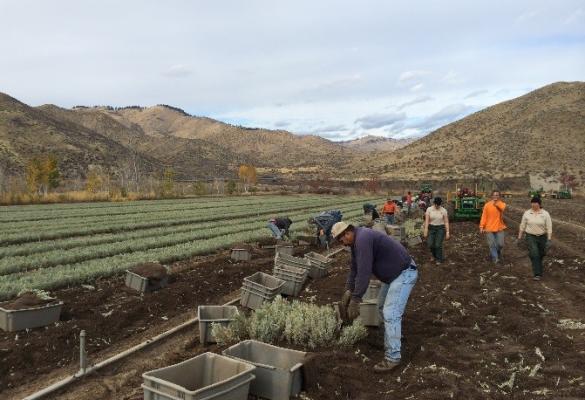Sagebrush Conservation and Restoration
Sagebrush habitats exist across the western United States in areas with hot, dry summers and cool, moist winters. They are dominated by big sagebrush (Artemisia tridentata) vegetation and perennial grasses (Pyke et al. 2015). Almost half of historic sagebrush habitat has been lost to land use conversion and invasive plants. Remaining sagebrush areas are increasingly invaded by nonnative annual grasses, fragmenting patches of big sagebrush and making the ecosystem less suitable for dependent wildlife, most notably the greater sage-grouse. Fire suppression, grazing, and invasive plants in sagebrush habitats have also altered the historic fire regime, leading to increased tree cover and higher potential for severe wildfires. Sagebrush restoration aims to restore sagebrush vegetation communities to their original state by promoting growth of a mix of big sagebrush and perennial forbs and grasses while eliminating invasive plant species.

Case Studies
Abandoned Farmland Restoration in the Sonoran Desert
Anthro Mountain Greater Sage Grouse Habitat Restoration
Five Creeks Rangelands Restoration
Kelly Hayfields Sagebrush Habitat Restoration
Over 30 Years of Brush Management on the Elkhorn Ranch
Restoration Research at Red Rock Canyon State Park
Revegetation Project at Marine Corps Air Ground Combat Center at 29 Palms
Tools
A Sagebrush Conservation Design to Proactively Restore Americas Sagebrush Biome
Bipartisan Indfrastructure Law Funding Through the Sage-Steppe Ecosystem Restoration Program
Climate Smart Restoration Tool
Grassland and Sagebrush Conservation Portal
Prioritizing Restoration of Sagebrush Ecosystems (PReset)
Reseeding Big Sagebrush: Techniques and Issues
Restoration Handbook for Sagebrush Steppe ecosystems with Emphasis on Greater Sage-Grouse Habitat
Restoration of Sagebrush Ecosystems Class
Sagebrush Conservation Strategy - Challenges to Sagebrush Conservation
Likely Benefits and Outcomes
This strategy is likely to achieve these project goals. Click to search for strategies with a similar benefit.
Related Green (natured-based) vs. Gray infrastructure
In development.
